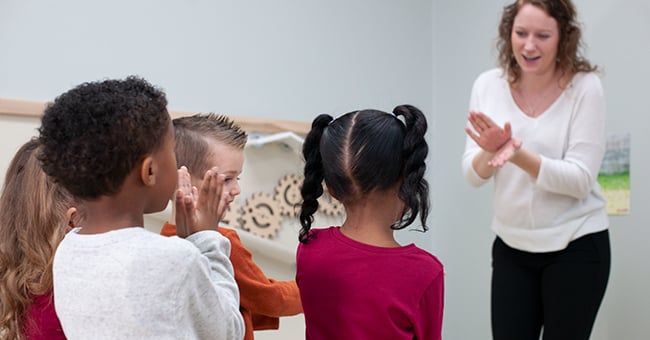
In the first blog of her series, Creating Inclusive Spaces, Dr. Lea Ann Christenson provides educators with simple strategies for cultivating authentic connections with Dual Language Learners and their families.
If you are teaching in most early childhood settings in any county in the United States, you will probably have the opportunity to serve at least one child in your classroom whose first language (L1) is not English and are Dual Language Learners (DLLs). If you do not have much experience or have not taken classes on how to work with DLLs and their families you may be wondering where to start.
Here are a few tips to get you started:
Learn About the Child
Find out as much as you can about the child.
- What language(s) are spoken at home?
- What is the country of origin of the family?
- What exact area?
This is important. Knowing a child's L1 is just the beginning of the story. You may learn that the child's first language is Spanish but that says little about the context in which they or their families are from. Is the child from a rural area in Spain? A large urban area in Mexico? A citizen of the United States from Puerto Rico? These regions are very different: geography, climate and culture. English is spoken in Manchester, England and Manchester, Vermont however, children from these places would have very different prior knowledge. Also, just as you would for your English Only children (EO), learn as much as you can about the child's family. To meet the needs of children, teachers need to know the strengths and cultural capital they bring to class and connect this knowledge to what is being taught.
Where Can I Learn About the Families in My Classroom?
A good place to start is to drive the neighborhoods in which the children live.
- What are the resources in the neighborhood?
- What does the child have access to on a daily basis?
Another resource is a staff member at your school. They may be able to tell you about the children and their families and how to best support them. Reach out to organizations in the neighborhood like churches and community organizations. Do not over generalize what you have learned. Use this information as a starting point and learn about each unique child under your care.
The #1 Most Important Advice for Families . . .
Encourage families to continue to use and strengthen L1 with their child. On the surface this may sound like poor advice because don't we want our DLLs to learn English? Yes, one of our major goals is to have children speak English at an academic level so they do well in school. However, while they are learning English, a strong academic L1 will provide a strong foundation for L2, in this case English.
Inform your families about what you are teaching so they can support this learning at home. For example, if you are teaching counting with one-to-one correspondence families can reinforce this concept at home. If you are teaching the life cycle of a butterfly or the seasons of the year families can support this content at home in their L1. Once a child knows a concept, the concept does not need to be relearned, just the vocabulary in the new language. If you learned a new language you would not need to relearn all of the concepts you already know, you would just need to learn the vocabulary in the new language.
Join me again next time, where we will discuss more on how to best communicate with families of your DLLs and I'll share a few tips for setting up your classroom to serve DLLs before the school year begins.
About the Author
Lea Ann Christenson, PhD, is an associate professor in the department of early childhood education at Towson State University. She earned her PhD in curriculum and instruction from the University of Maryland, College Park. Her work focuses on early literacy acquisition, English as a second language instruction, and STEAM teaching and learning. She is also the author of Strength in Diversity: A Positive Approach to Teaching Dual-Language Learners in Early Childhood.
Explore This Series
Creating Inclusive Spaces: The Basics of Serving Dual Language Learners
Creating Inclusive Spaces: Communication Plans for DLLs
